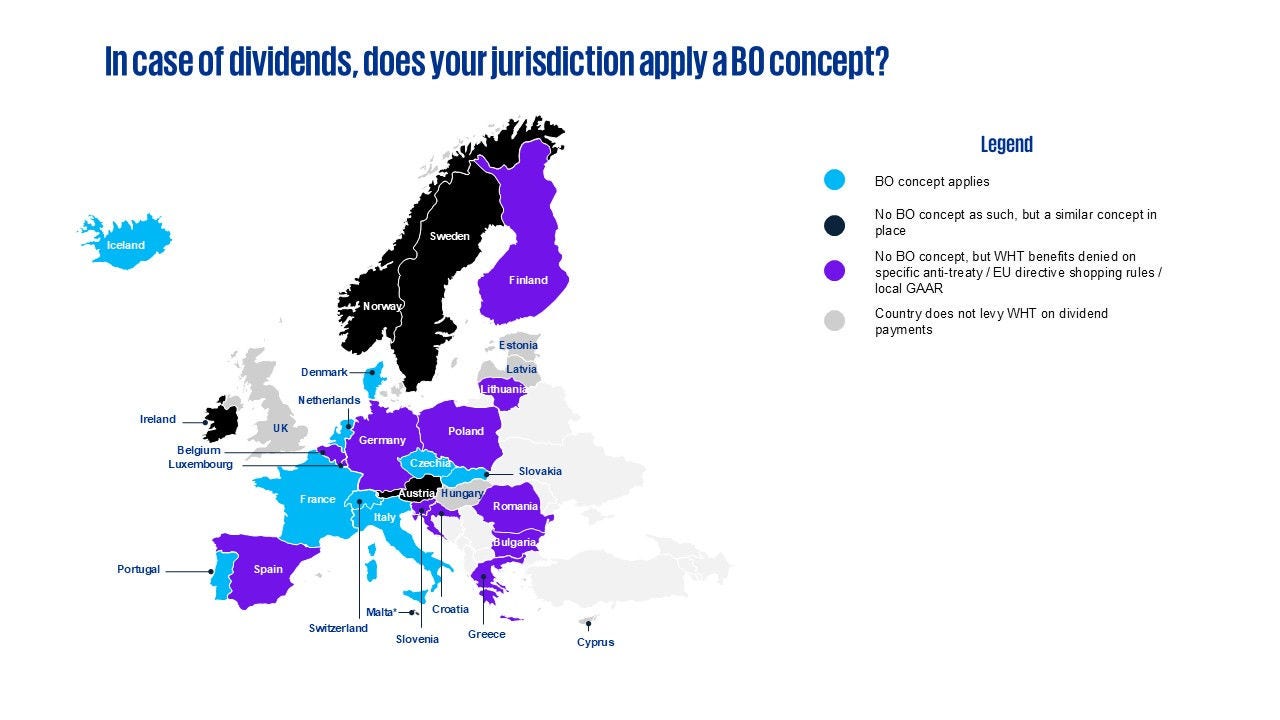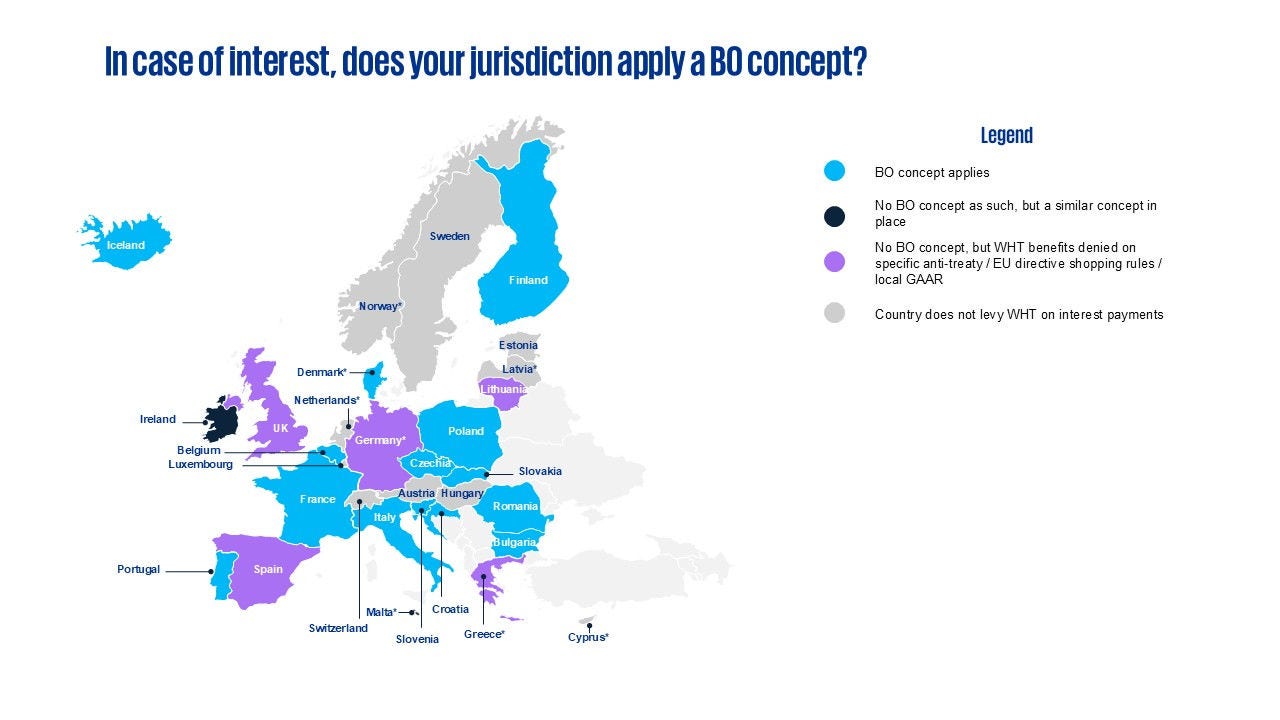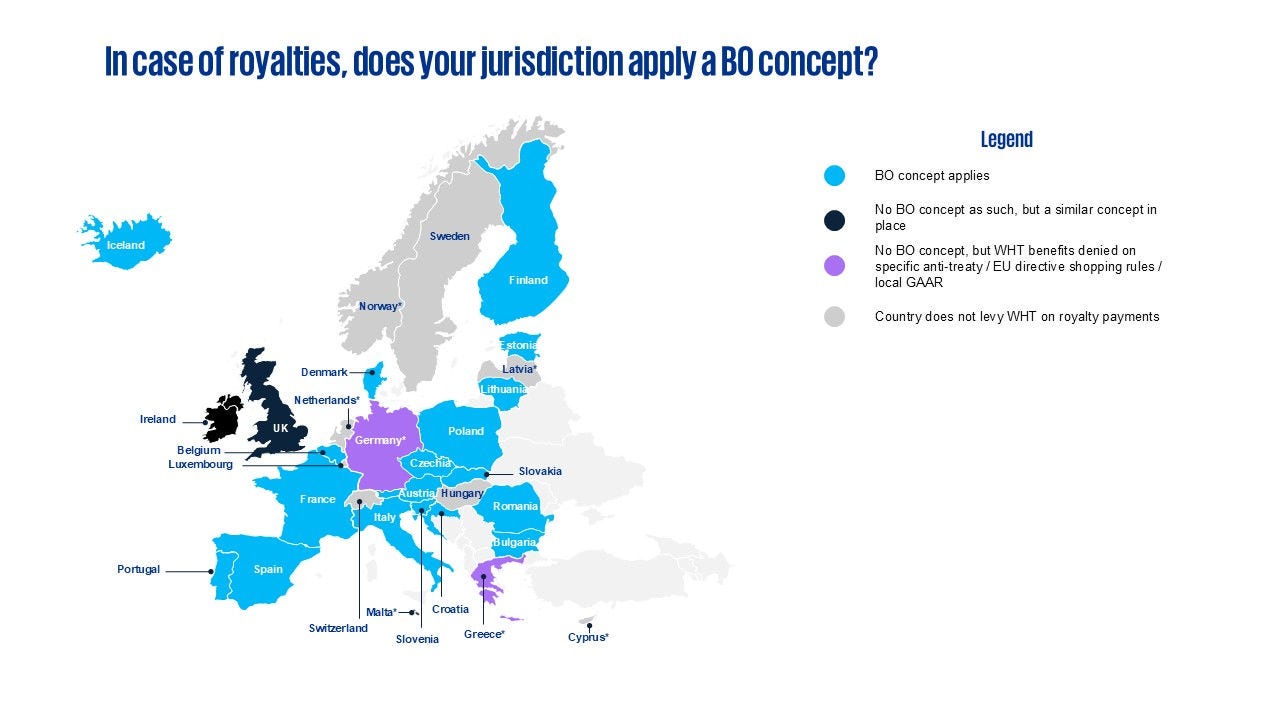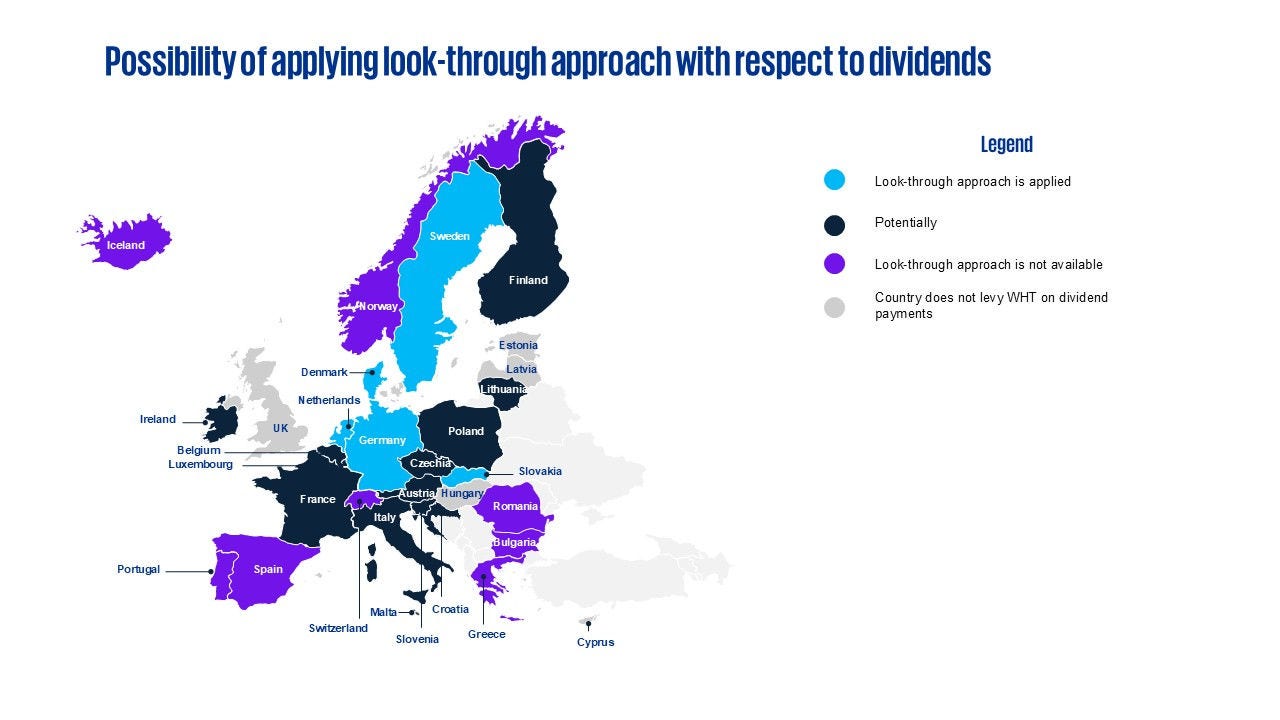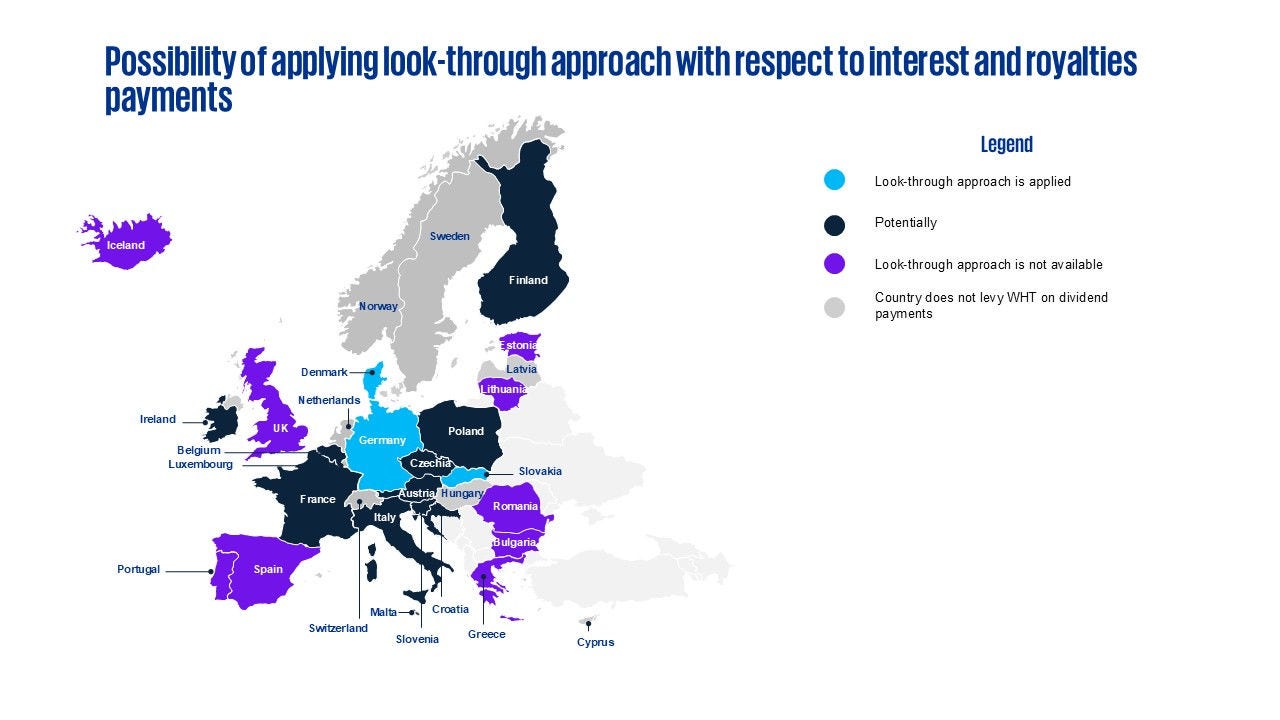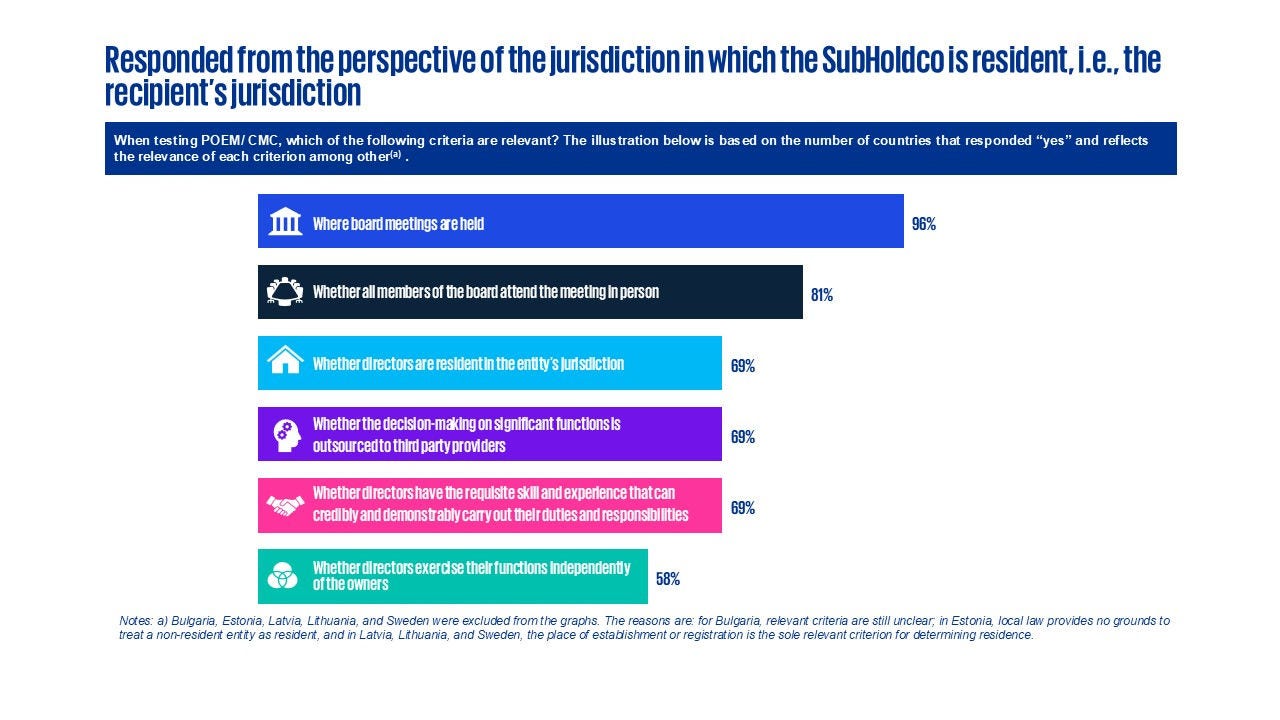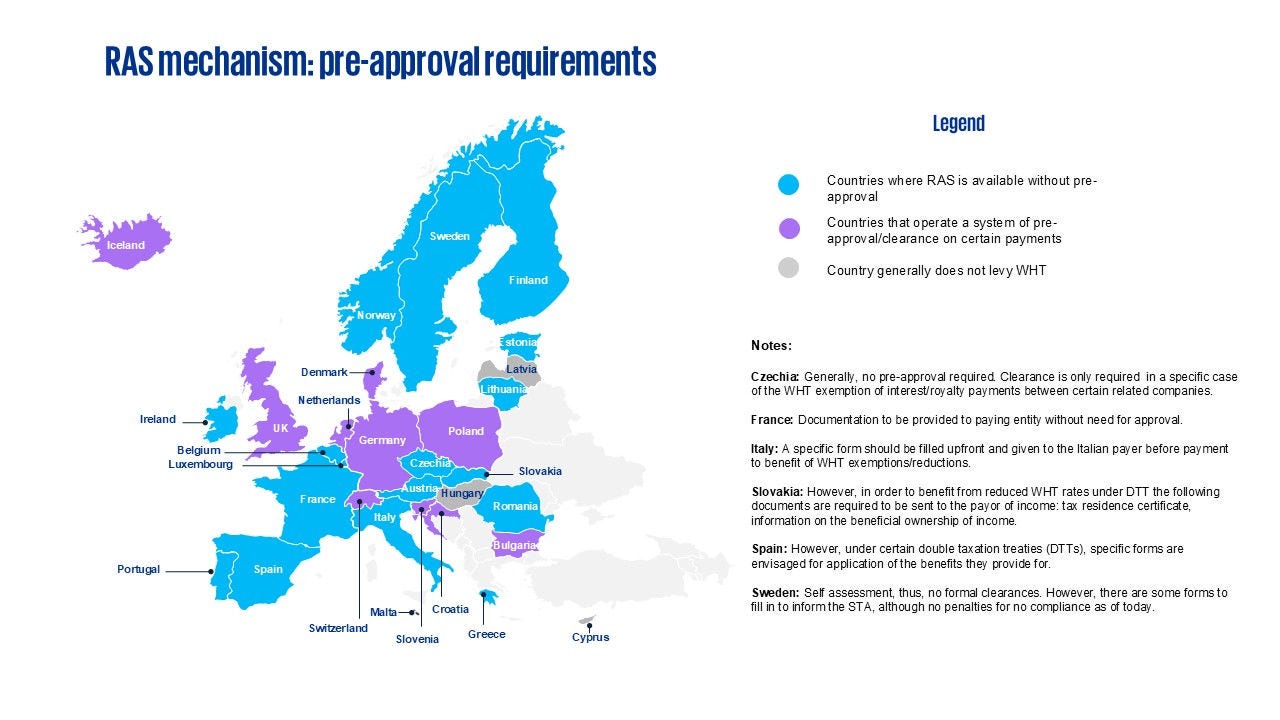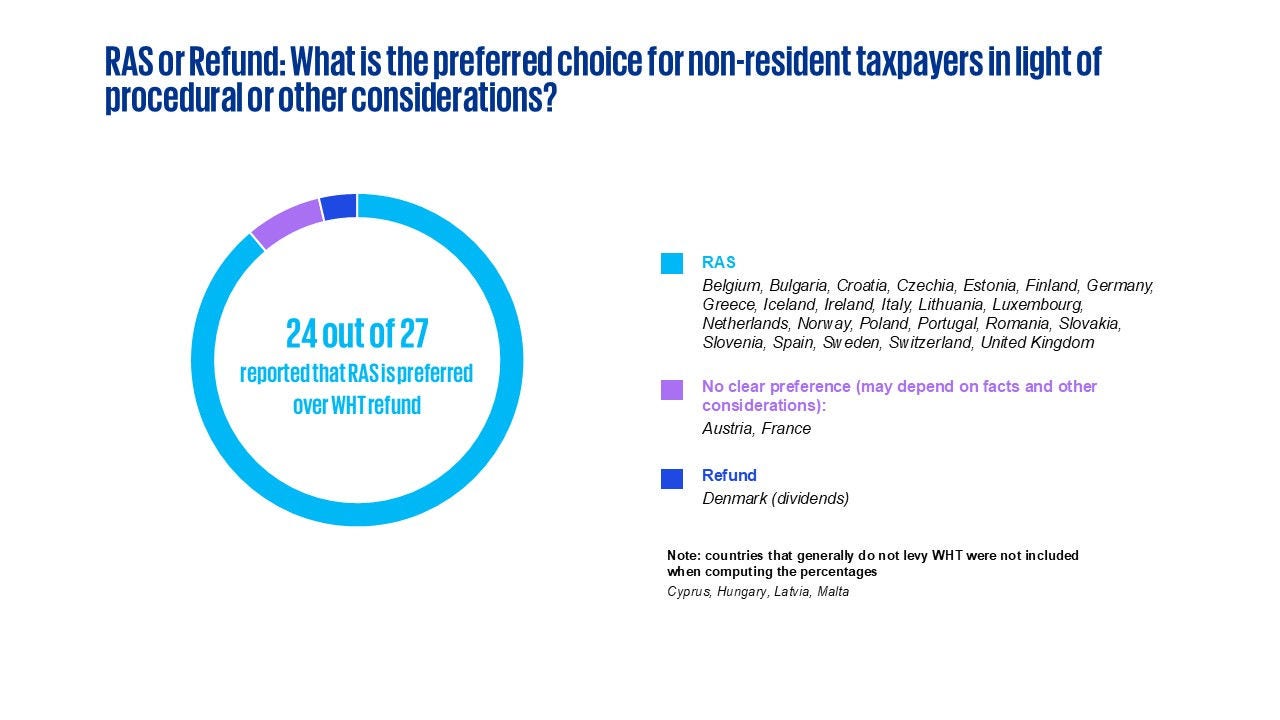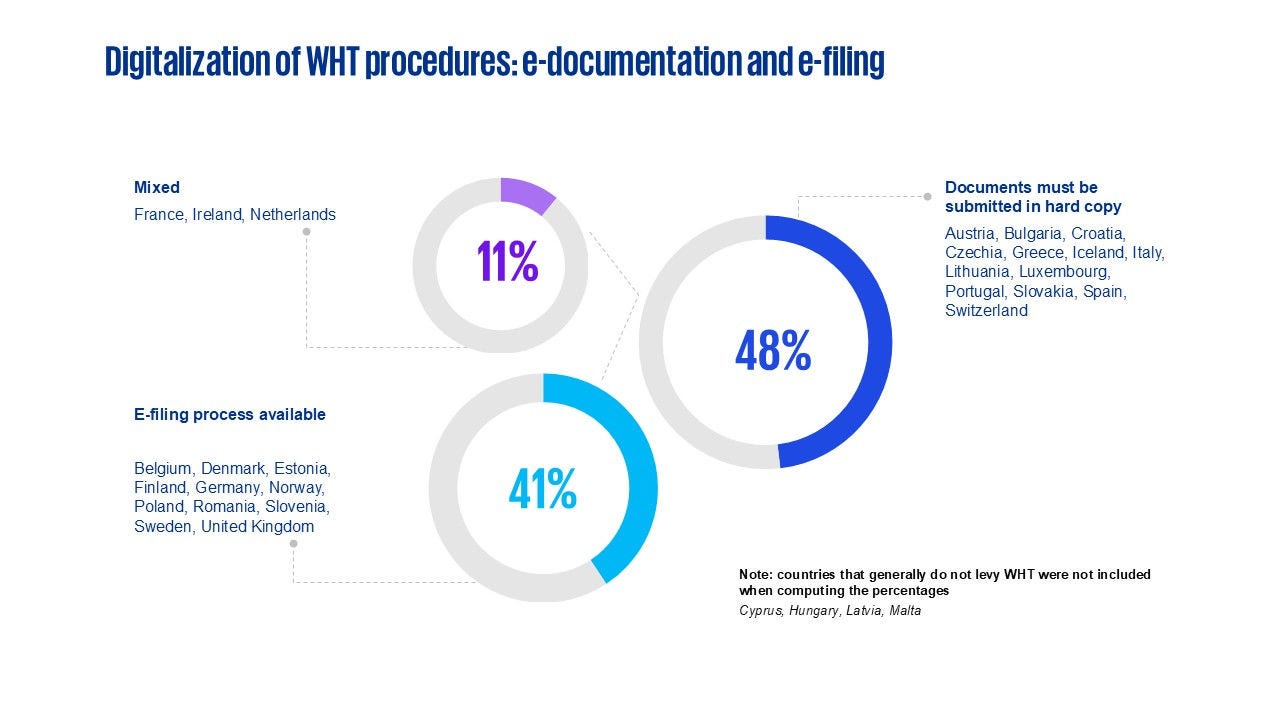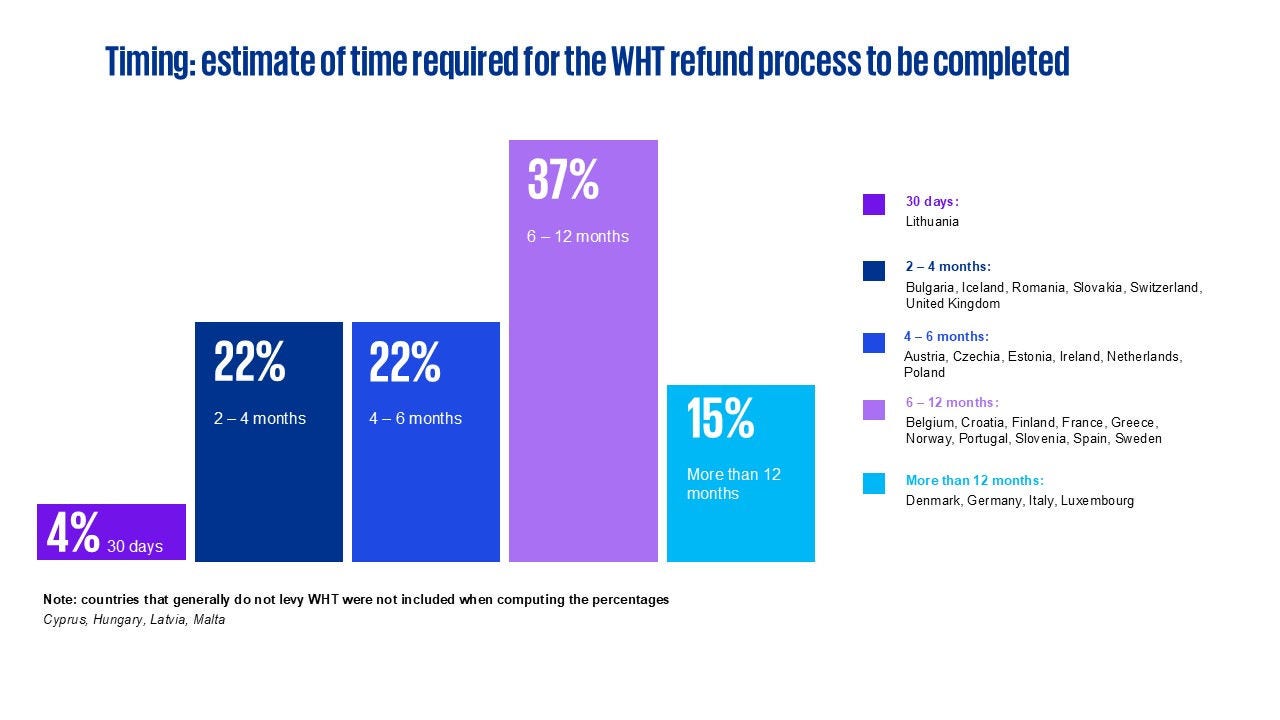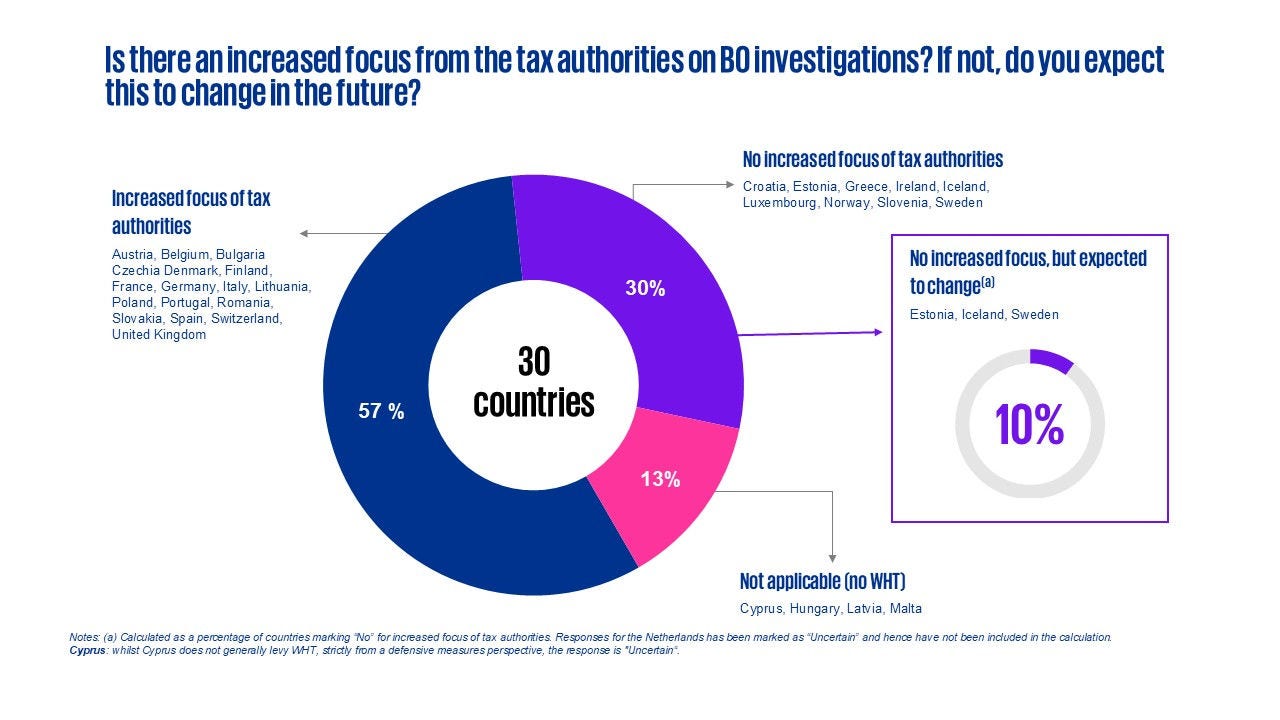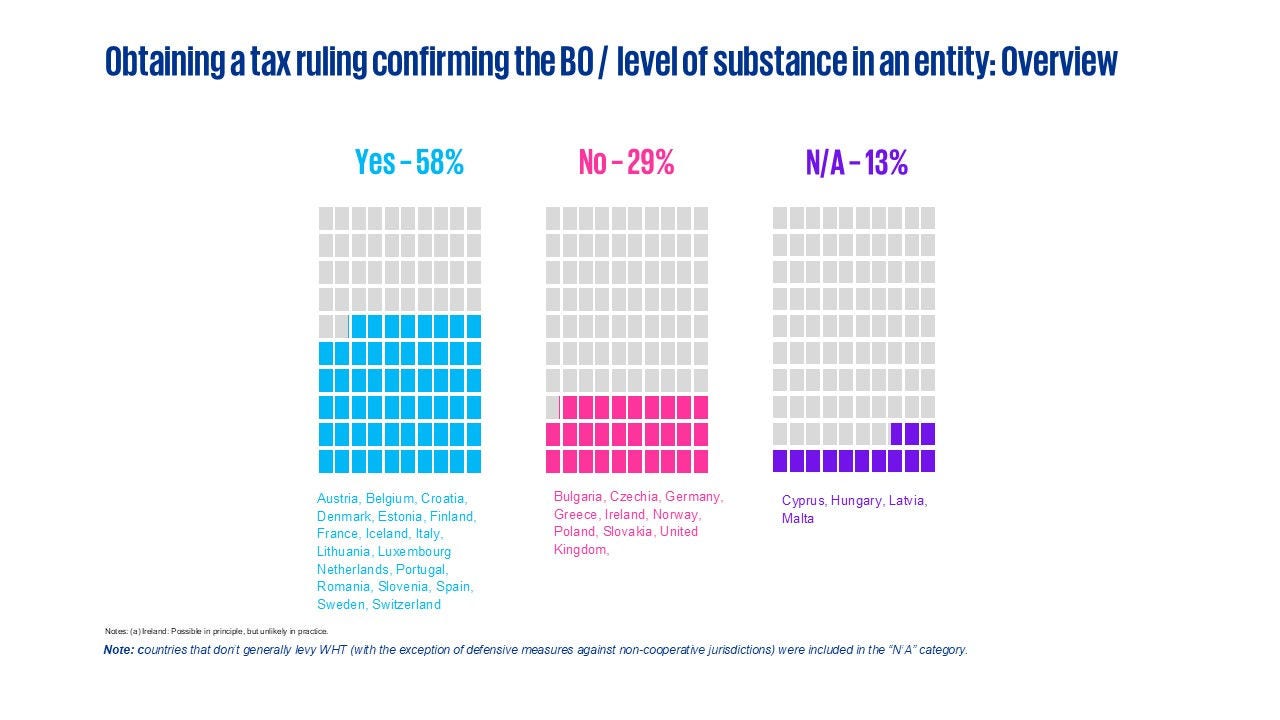1 Signatories were offered three options to meet this specific minimum standard, by implementing: (i) a principal purpose test (PPT) alone (default option), (ii) a PPT and a simplified or detailed limitation on benefits provision (LOB), or (iii) a detailed LOB provision, supplemented by a mechanism that would deal with conduit arrangements not already dealt with in tax treaties. The PPT would deny a treaty benefit in respect of an item of income or capital, if it was reasonable to conclude, having regard to all relevant facts and circumstances, that obtaining that benefit was one of the principal purposes of an arrangement or transaction that resulted directly or indirectly in that benefit, unless it was established that granting that benefit in the given circumstances would be in accordance with the object and purpose of the relevant provisions of the covered double tax treaties. All EU Member States have signed the MLI.
2 Joined cases N Luxembourg 1 (C-115/16), X Denmark (C-118/16) and C Danmark 1 (C-119/16) and Z Denmark case (C-299/16) on the Interest and Royalties Directive and joined cases T Danmark (C-116/16) and Y Denmark (C-117/16) on the Parent-Subsidiary Directive. See Euro Tax Flash Issue 396 for more details.
3 The IRD limits the withholding tax exemption to the beneficial owners of the interest. In contrast, the text of the Parent-Subsidiary Directive does not explicitly incorporate a beneficial ownership test concerning dividend payments.
4 This alignment is rooted in the fact that the original IRD proposal was built on the OECD’s work in this matter.
5 Under settled CJEU case-law, proof of an abusive practice requires, first, a combination of objective circumstances in which, despite formal observance of the conditions laid down by the EU rules, the purpose of those rules has not been achieved and, second, a subjective element consisting in the intention to obtain an advantage from the EU rules by artificially creating the conditions laid down for obtaining it. The presence of a certain number of indications may demonstrate that there is an abuse of rights, in so far as those indications are objective and consistent. While the Court cannot assess the facts in a specific case brought before it, the CJEU may nevertheless specify indicia that could lead to the conclusion that there is an abuse of rights. To this end, in the Danish cases, the CJEU provided illustrative examples that could indicate the existence of abuse in conduit situations.
6 C-504/16. The CJEU also noted in that context that the existence of abuse requires, on a case-by-case basis, an overall assessment of the relevant situation be conducted, based on factors including the organisational, economic or other substantial features of the group of companies to which the parent company in question belongs and the structures and strategies of that group.
7 European Commission proposal COM(2021) 565 for a COUNCIL DIRECTIVE laying down rules to prevent the misuse of shell entities for tax purposes and amending Directive 2011/16/EU. Note that the Unshell Directive proposal is also sometimes referred to as “ATAD3”, ie the second amendment to the EU’s Anti-Tax Avoidance Directive; however, Unshell was put forward by the European Commission as a standalone proposal. It is therefore inaccurate to refer to the proposal as ATAD3.
8 The current article was produced with the support KPMG member firms located in the EU forming part of KPMG’s Europe, the Middle East & Africa (EMA) region. Throughout the submission, “we”, “KPMG”, “us” and “our” refer to the network of independent member firms operating in the EU.
9 Jurisdictions surveyed include the following: Austria, Belgium, Bulgaria, Croatia, Cyprus, Czechia, Denmark, Estonia, Finland, France, Germany, Greece, Hungary, Iceland, Ireland, Italy, Latvia, Lithuania, Luxembourg, Malta, Netherlands, Norway, Poland, Portugal, Romania, Slovakia, Slovenia, Spain, Sweden, Switzerland, the UK.
10 For most of the countries surveyed, the application of reduced rates under double tax treaties is subject to a beneficial ownership test as a separate criterion only if this requirement is explicitly included in the relevant treaty. Due to the diversity in approaches and the reliance on the specific wording of each treaty, this information is not depicted in the maps below. An exception is Iceland, which does not offer broad WHT exemptions; however, in practice, the application of reduced rates under double tax treaties is generally contingent upon beneficial ownership testing based on the relevant administrative procedures.
11 Under Article 1, paragraph 4 of the IRD, a company of a Member State “shall be treated as the beneficial owner of interest or royalties only if it receives those payments for its own benefit and not as an intermediary, such as an agent, trustee or authorized signatory, for some other person”.
12 Such indicators may include: having an active business, local board of directors meetings (with a preference for a majority of Belgian resident directors), employing one or more full-time personnel with authority to legally bind the company for day-to-day management purposes, having an office space (which may be leased), maintaining local bookkeeping, various assets on the balance sheet, and a local bank account.
13 In this case, the beneficial owner is defined as an entity that enjoys the benefits of owning a security or property, irrespective of the name on the title.
14 In the case of interest and royalties, the remaining countries (27 percent) only made reference to the BO concept included in the IRD, as defined above.
15 Under the look-through approach, tax authorities ‘look past’ the immediate recipient of income (such as a holding or intermediary company) to assess whether a higher-tier shareholder in the ownership chain is the true beneficial owner. If that higher-tier shareholder would have been entitled to a reduced WHT rate or exemption, had it invested directly in the source country, the authorities may grant those WHT benefits. Without this approach, domestic exemptions or treaty relief are denied if the immediate recipient fails the beneficial ownership test—even if an upper-tier shareholder would have qualified.
16 In the context of the Danish cases, the CJEU provided guidance on what could constitute abuse under EU Law. However, it was for the local Danish courts to assess whether the arrangements under review constituted an abuse based on the guidance provided.
17 This ruling relates to cases T Denmark (C-116/16) and Y Denmark (C-117/16), the two joined Danish cases on the concept of BO of dividend distributions that were ruled on by the CJEU. Both cases concern dividend distributions made by a Danish resident company to an intermediate holding company resident in the EU. For more details, please refer to E-news Issue 169.
18 The ruling relates to cases N Luxembourg 1 (C-115/16) and X Denmark (C-118/16), two of the four joined Danish cases on the concept of BO in respect of cross-border interest payments. For more details, please refer to E-news Issue 177.
19 See: https://www.gov.uk/hmrc-internal-manuals/international-manual/intm332060, which notes (in the context of an example involving a payment of interest to a Special Purpose Vehicle, which in turn makes onward payments to bondholders): "HMRC will also accept that there is no need to invoke the “international fiscal meaning” of beneficial ownership to deny treaty benefits where the lender receiving income directly from the SPV (the “true” beneficial owner of the interest) would, if they had been the direct recipient of the interest, have been entitled to treaty benefits as a resident of a state with which the UK has a DTC with zero withholding on interest. It is not necessary for the beneficial lender in this scenario to have made a formal claim for treaty benefits in order to assess what entitlement to claim would have arisen.”
20 The two most common approaches to determining tax residence for corporations are (i) place of incorporation, i.e., the jurisdiction considers a corporation to be tax resident if it is incorporated under its laws, and (ii) place where the corporation is effectively managed from. The latter is an assessment of facts and circumstances and typically takes the form of a place of effective management (POEM) test, a central management and control (CMC) test, or an assessment of other factors indicative of tax nexus, i.e., a connection to that jurisdiction (e.g., where the company has its bank accounts and bookkeeping).
- When assessing POEM, jurisdictions may consider facts such as: place of day-to-day management, where strategic decisions are taken, where the annual meetings of shareholders are held, place where board meetings are held, place of residence of board members, etc.
- The exercise of central management and control (CMC) generally looks at where board meetings are held but also considers other facts and circumstances, such as whether in reality decision making power sits with persons other than the board so that central management and control is exercised outside board meetings (e.g., via a parent or by the executive management team). POEM can also be relevant to CMC jurisdictions in the context of a tie-breaker rule under a double tax treaty.
- The Commentary to the OECD Model Tax Convention refers to the place of effective management in solving dual residence problems that can arise where both contracting states consider an entity to be tax resident within their jurisdiction. Under the Commentary, the place of effective management is the place where key management and commercial decisions that are necessary for the conduct of the entity’s business as a whole are in substance made.
21 Please note that Bulgaria, Estonia, Latvia, Lithuania, and Sweden were not included when computing the percentages. The reasons are: for Bulgaria, relevant criteria are still unclear; in Estonia, local law provides no grounds to treat a non-resident entity as resident, and in Latvia, Lithuania, and Sweden, the place of establishment or registration is the sole relevant criterion for determining residence.
22 For the purpose of this section, relevant surveyed jurisdictions refer only to the 26 jurisdictions (out of the 31 surveyed jurisdictions) in which companies could be deemed to be tax resident even in cases where they are incorporated in a foreign jurisdiction. Bulgaria was also excluded due to the fact that the criteria based on which a foreign company could be deemed as a tax resident of Bulgaria are uncertain.
23 https://www.gov.uk/hmrc-internal-manuals/international-manual/intm120130
24 Countries that do not generally levy withholding tax were excluded from these calculations - Cyprus, Hungary, Latvia, and Malta.
25 Please note that Cyprus, Hungary, Latvia, Malta, which generally do not levy WHT, were not included when computing the percentages.
26 Please note that Cyprus, Hungary, Latvia, and Malta, which generally do not levy WHT, were not included when computing the percentages.
27 Notably, responses from the Netherlands were marked as “Uncertain” and have been excluded from the percentage calculations.

